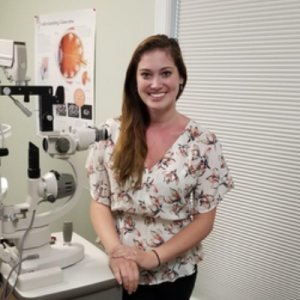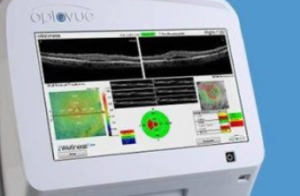Over 40% of Americans are nearsighted, while over 25% are farsighted.
But what’s the difference between these two conditions?
Farsightedness and nearsightedness are common refractive errors that affect millions of people across the globe.
Refractive errors occur when the eye is unable to refract, or focus, light directly onto the retina, resulting in blurry or distorted vision.
However, while blurry vision is the defining symptom of both farsightedness and nearsightedness, they are two very different vision problems.
What is farsightedness?
Farsightedness, clinically termed hyperopia, causes nearby objects to appear blurry.
This refractive error occurs when light is focused behind the retina, instead of directly on the retina, as a result of:
- The eyeball being too short
- The curve of the cornea being too flat
- The lens of the eye being too flat
What are the symptoms of farsightedness?
Farsightedness is an inherited condition that is often present from birth, though it can develop later on in life. In rare cases, hyperopia may develop from complications in utero or early childhood, such as trauma to the eye or an illness.
The most common symptoms include:
- Trouble focusing on nearby objects, such as books or screens
- Eyestrain
- Squinting
- Headaches while performing near work
- Burning and aching in or around the eyes
How is farsightedness treated?
Farsightedness is generally corrected with glasses or contact lenses. Your optical prescription will be written with a plus sign, such as +1.00 or +2.25.
Adults who wish to eliminate the need for eyewear, may opt for laser refractive surgery, a permanent method of vision correction.
SEE RELATED: Why Are Eye Exams Important?
If you or your child is experiencing blurry vision, schedule an appointment with an eye doctor near you.
What is nearsightedness?
Nearsightedness, clinically termed myopia, causes objects in the distance to appear blurry.
This refractive error occurs when light entering the eye is focused in front of the retina, instead of directly on the retina, as a result of:
- The eye being too long
- The cornea being too curved
What are the symptoms of nearsightedness?
Nearsightedness is generally first diagnosed in childhood.
The most common symptoms include:
- Blurry distance vision
- Squinting
- Excessive blinking or eye rubbing
- Headaches
- Eye strain
- Poor night vision, especially while driving
Myopia often worsens until it stabilizes when the eye reaches its adult size, at around age 20.
How is nearsightedness treated?
Eyeglasses and contact lenses are the most commonly prescribed methods of myopia correction, especially for children. Your optical prescription will be written with a minus sign, such as -1.00 or -2.25.
Adults who wish to eliminate the need for eyewear, may opt for laser refractive surgery, a permanent method of myopia correction.
What is myopia management?
High levels of myopia have been associated with an increased risk of sight-threatening diseases.
If your child’s nearsightedness is worsening each year, a myopia management program may be the best option to stop or slow myopia progression.
Managing myopia progression can be accomplished through a variety of effective methods, including multifocal lenses, orthokeratology (ortho-k) lenses, and atropine eye drops.
If you or your child are nearsighted or farsighted, regular eye exams are important for monitoring your eye health and ensuring your optical prescription is up to date.
LEARN MORE: Guide to Eye Exams
To know with certainty whether you are nearsighted or farsighted, schedule an eye exam with an eye doctor near you.
Farsightedness and nearsightedness are common refractive errors that affect millions of people across the globe.
However, while blurry vision is the defining symptom of both conditions, they are two very different vision problems.










